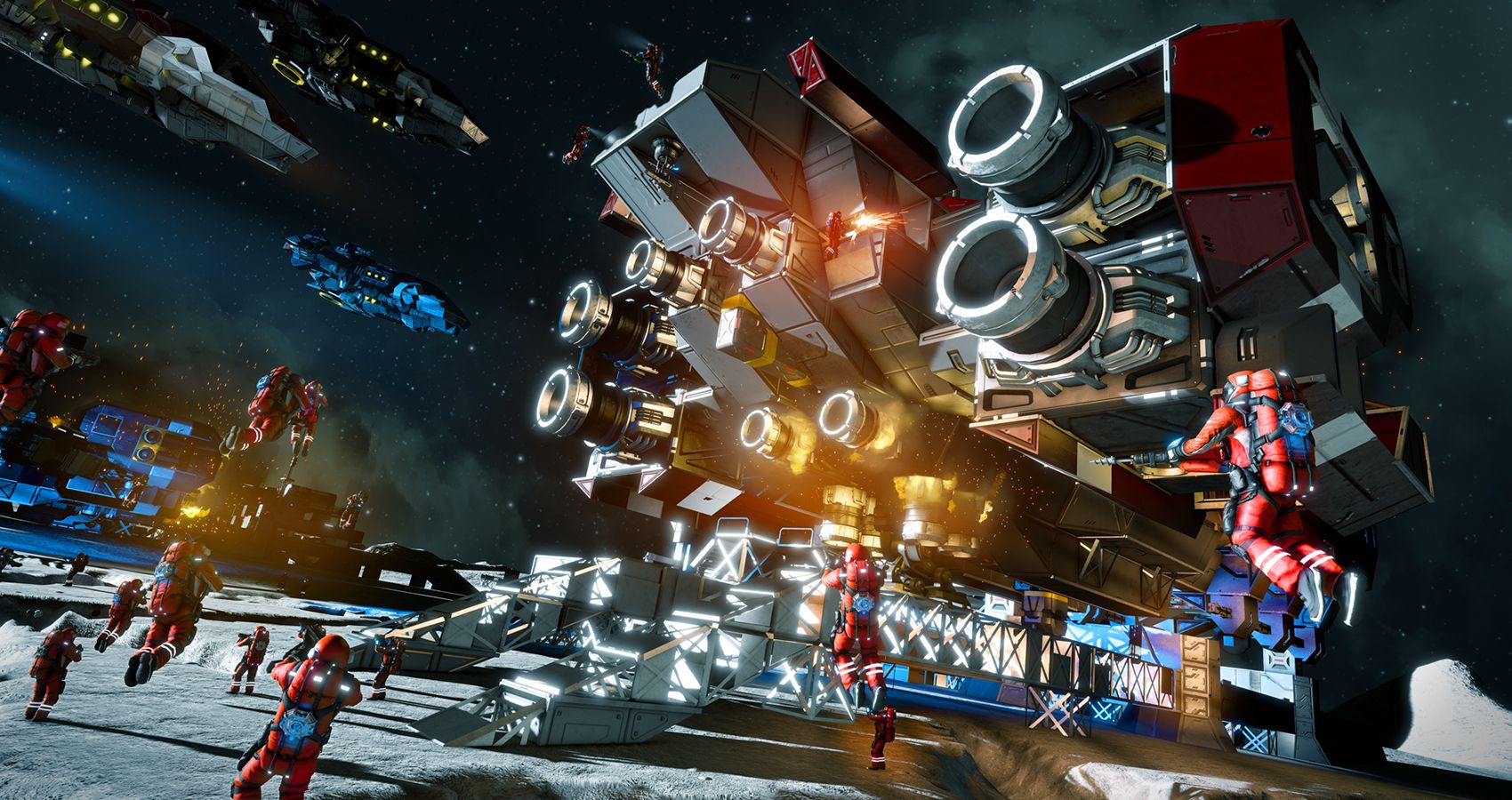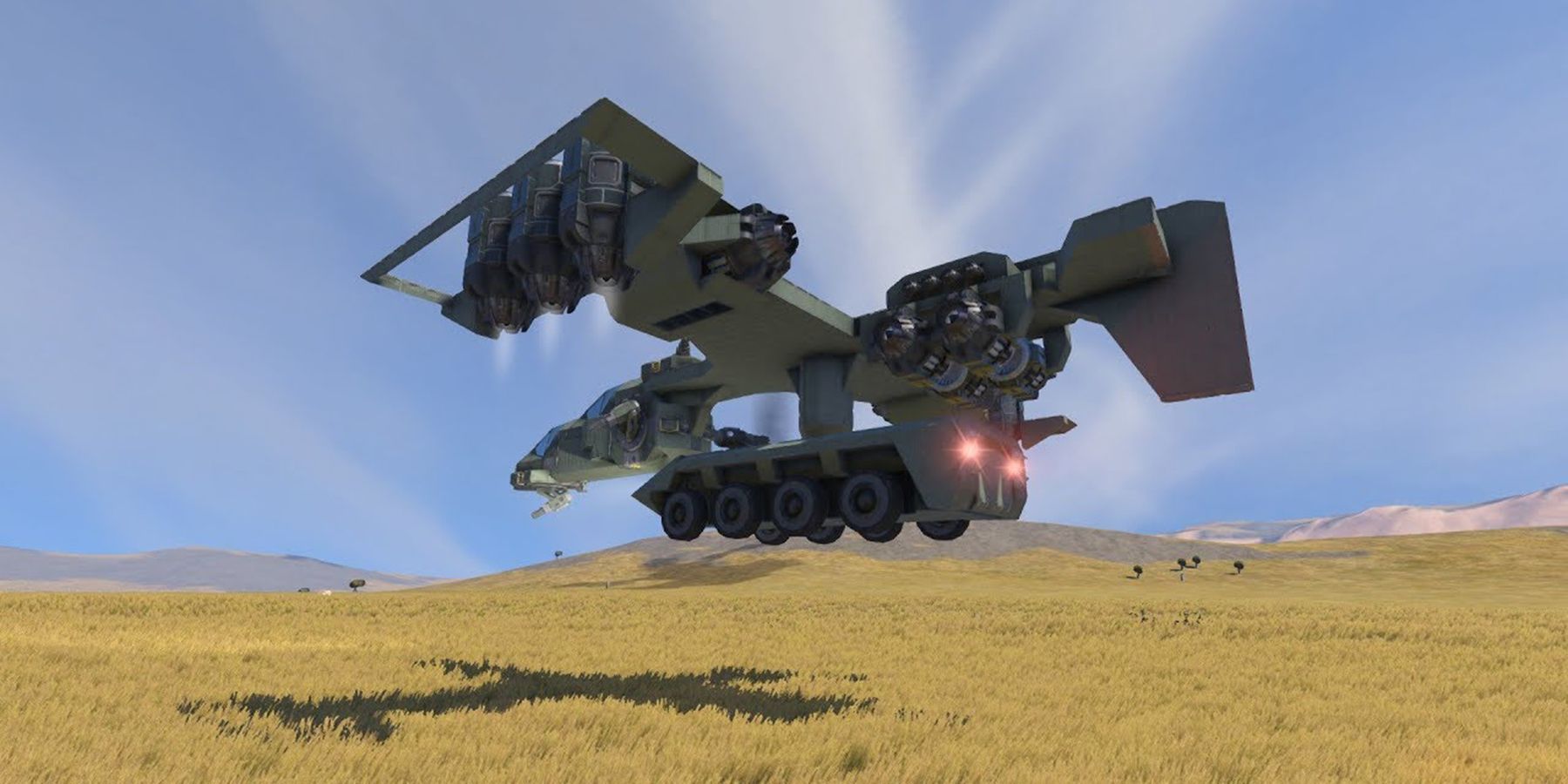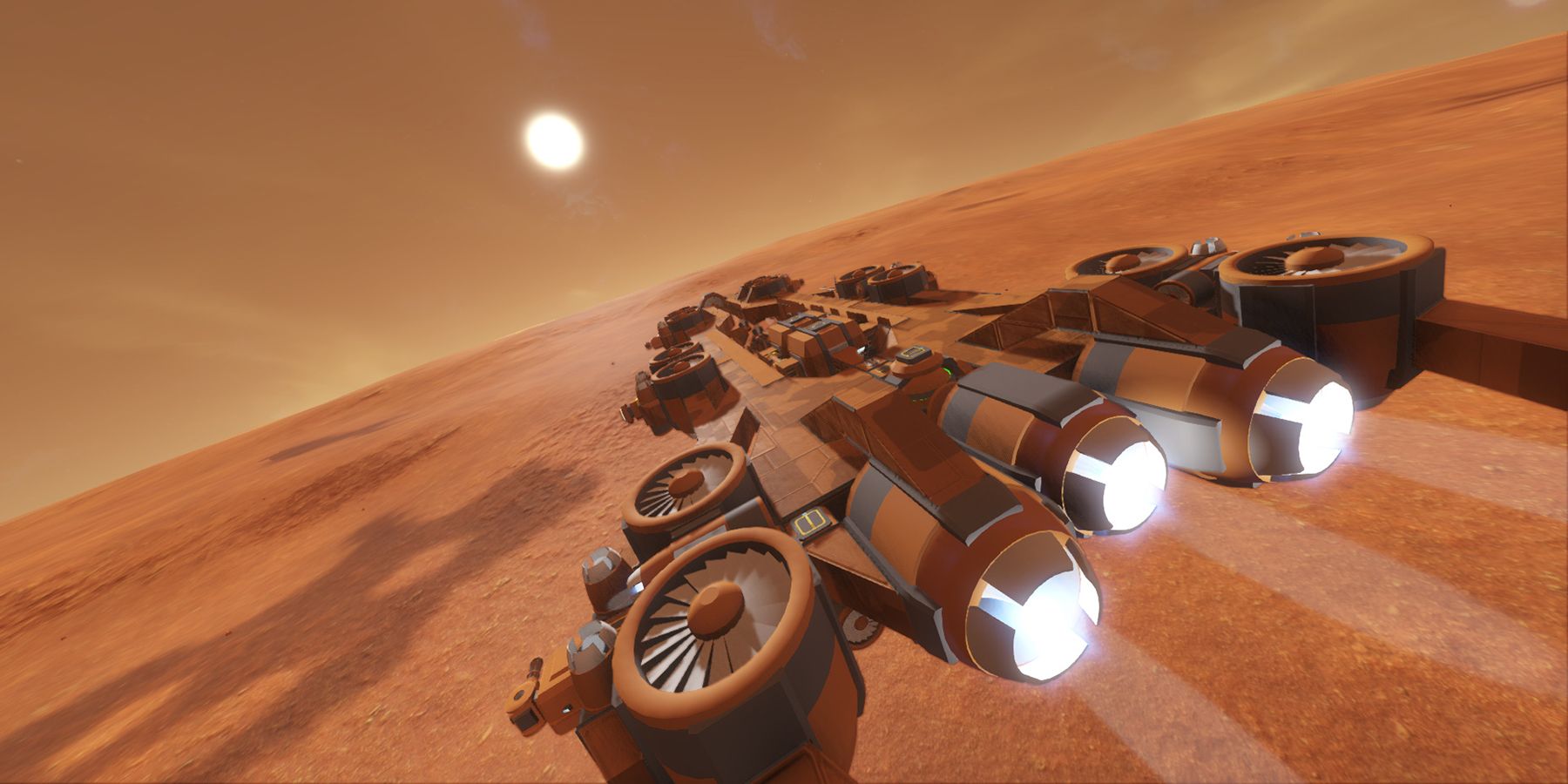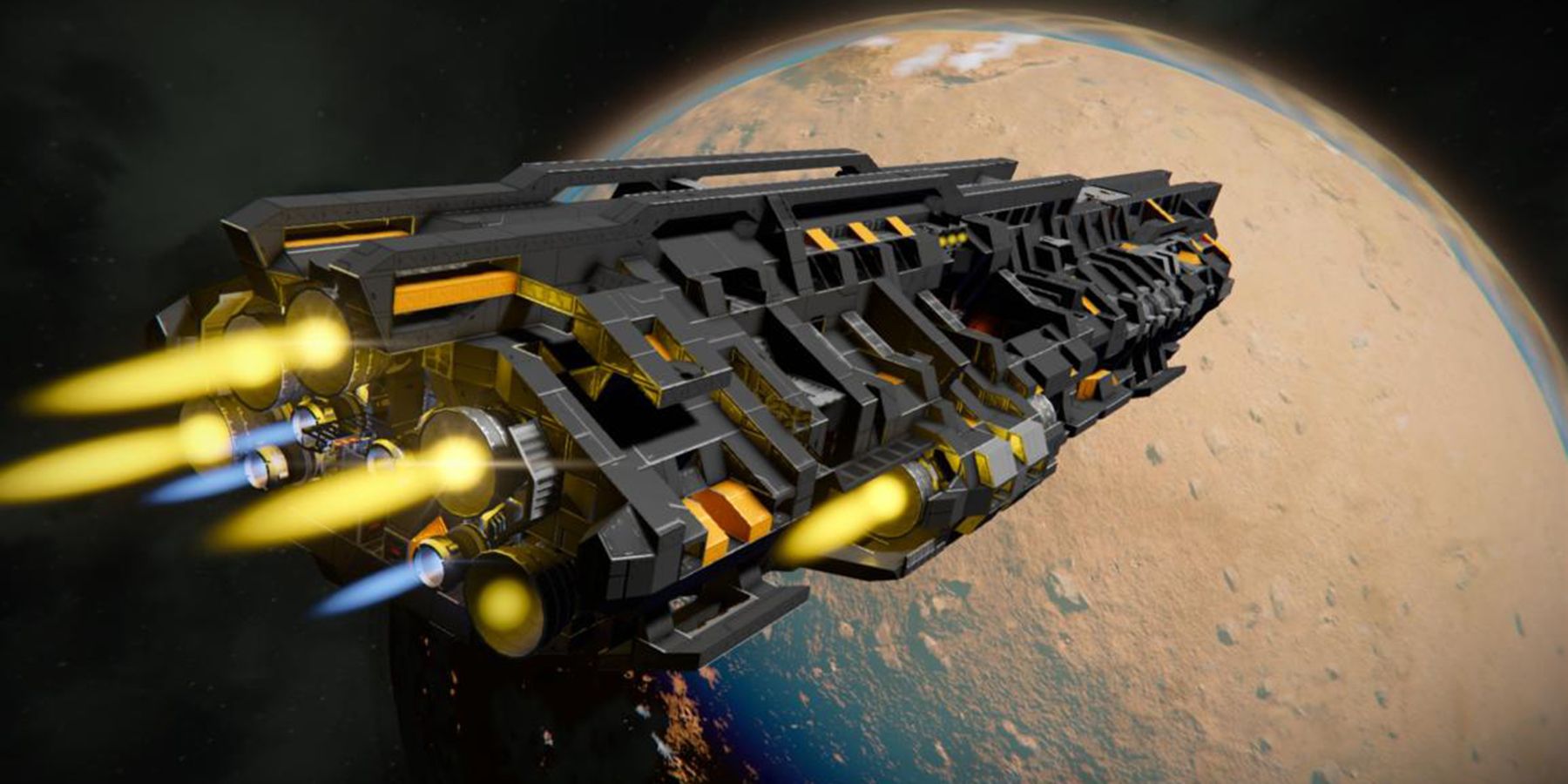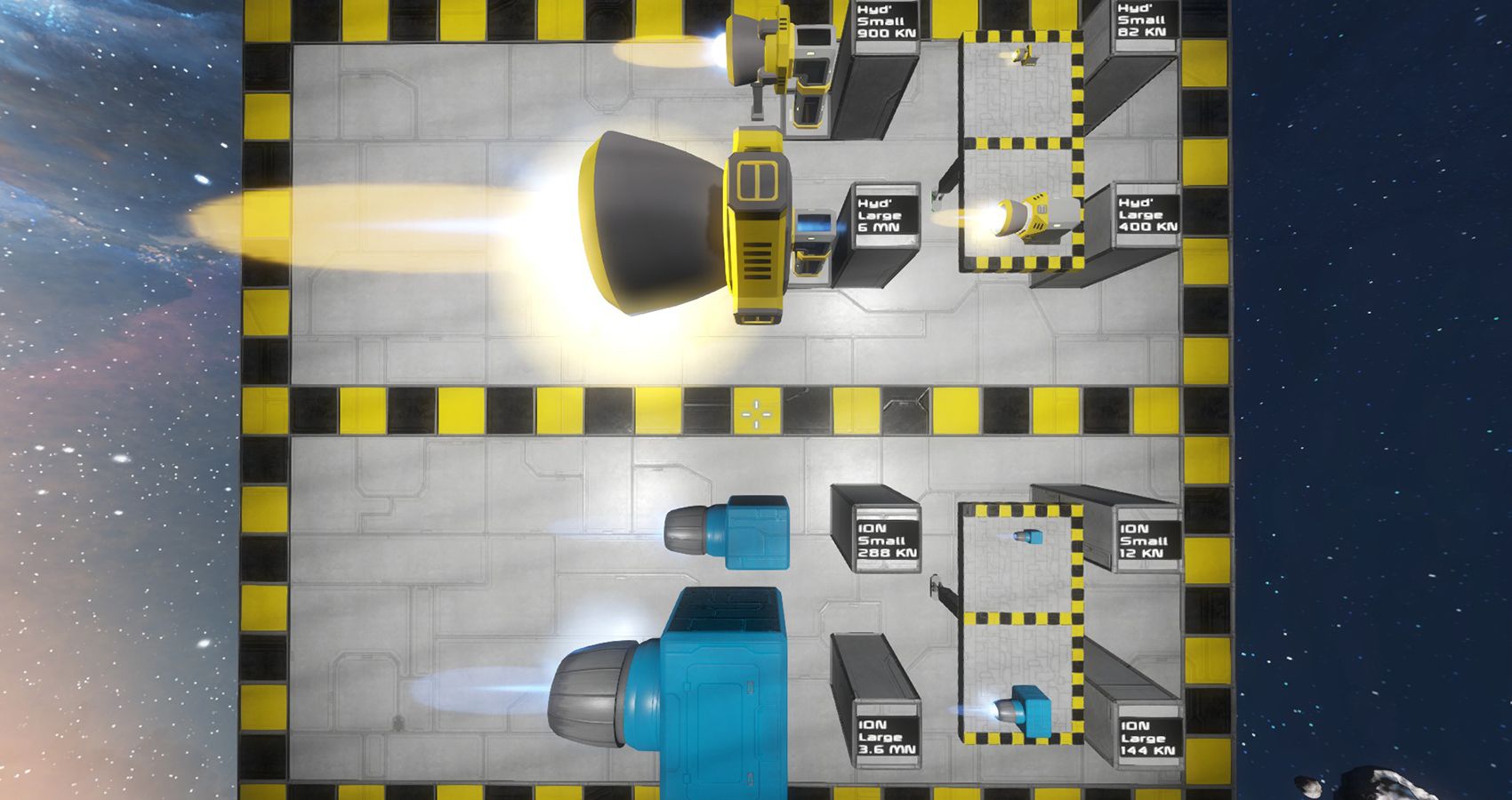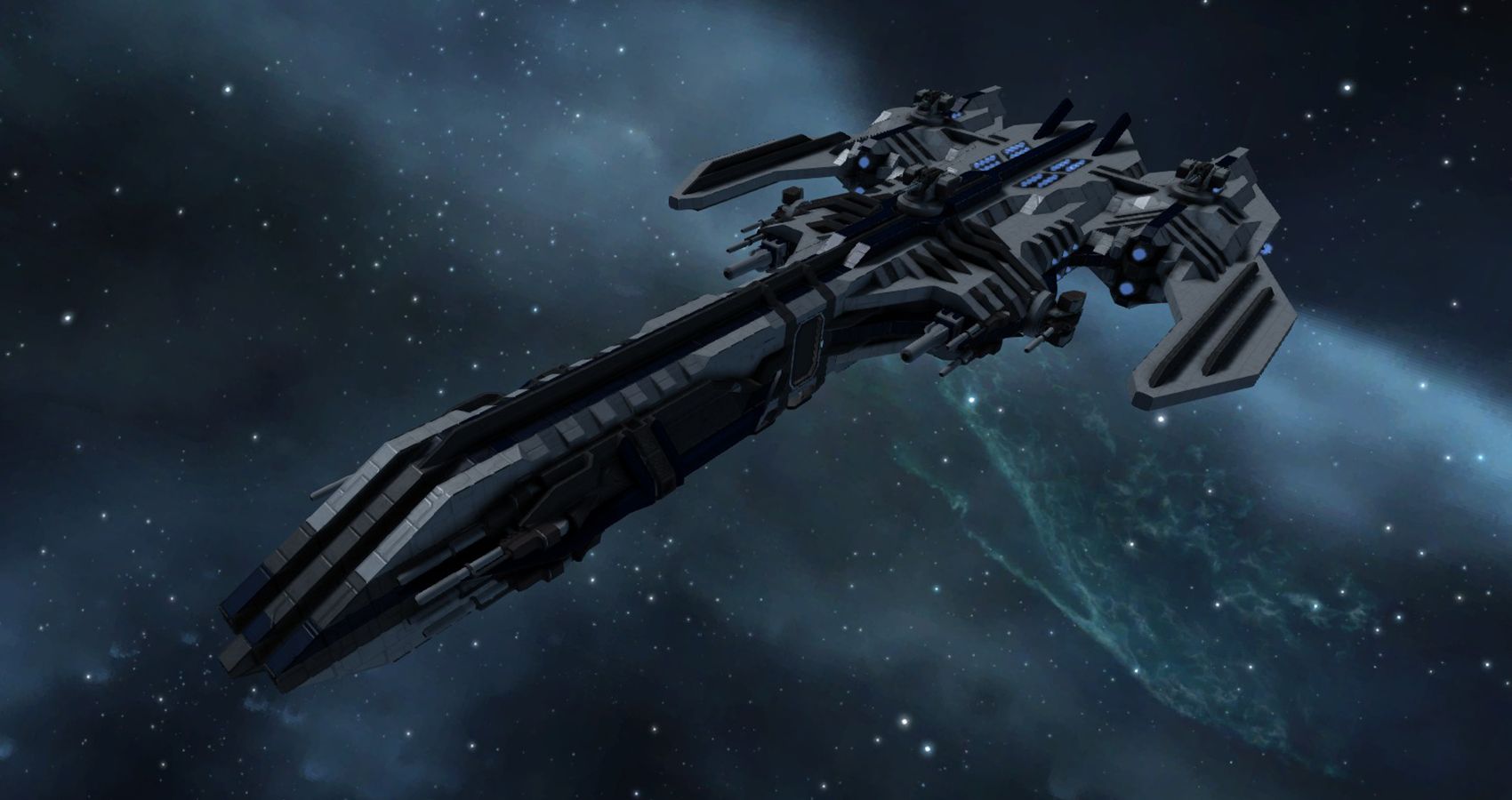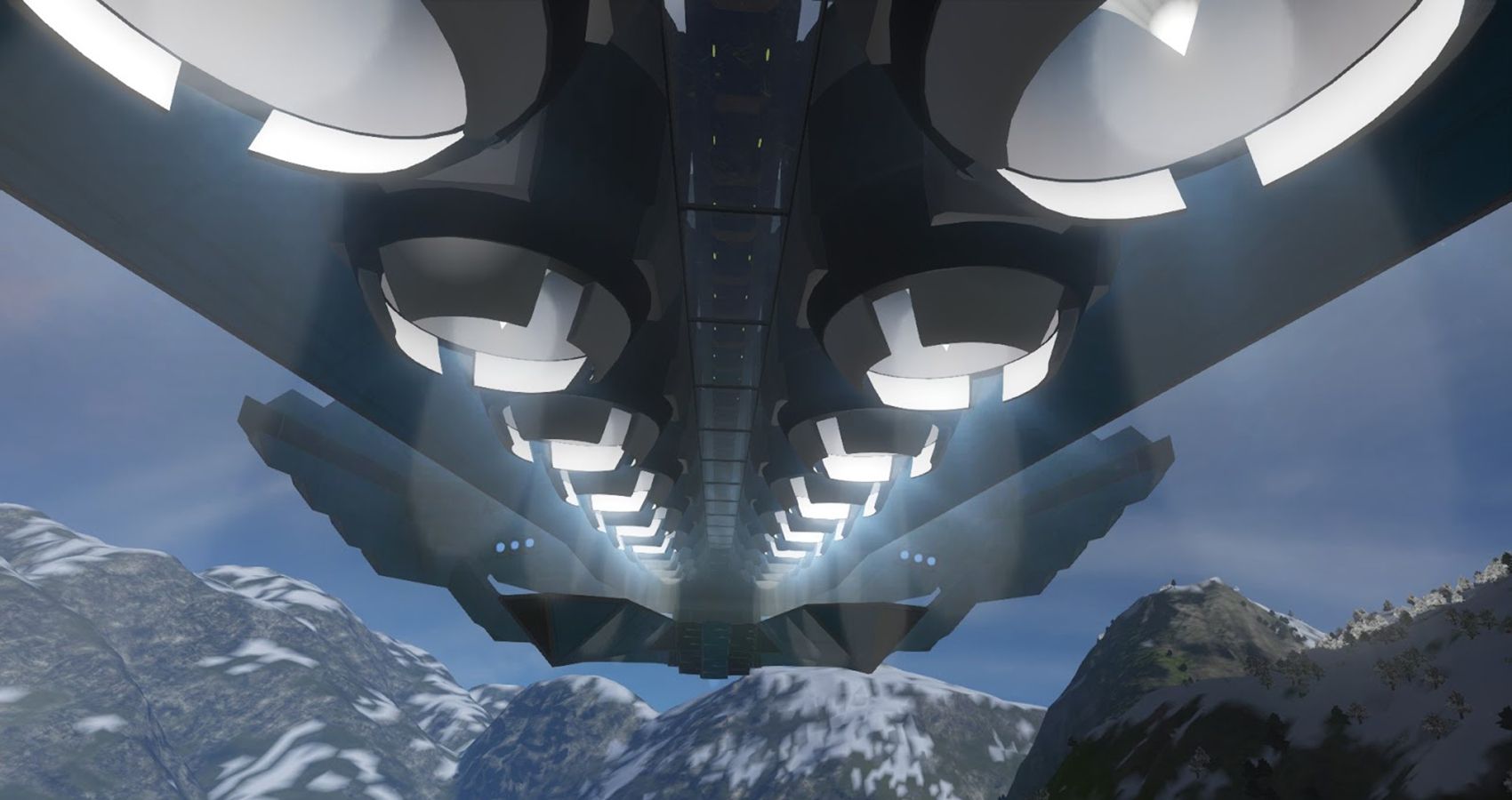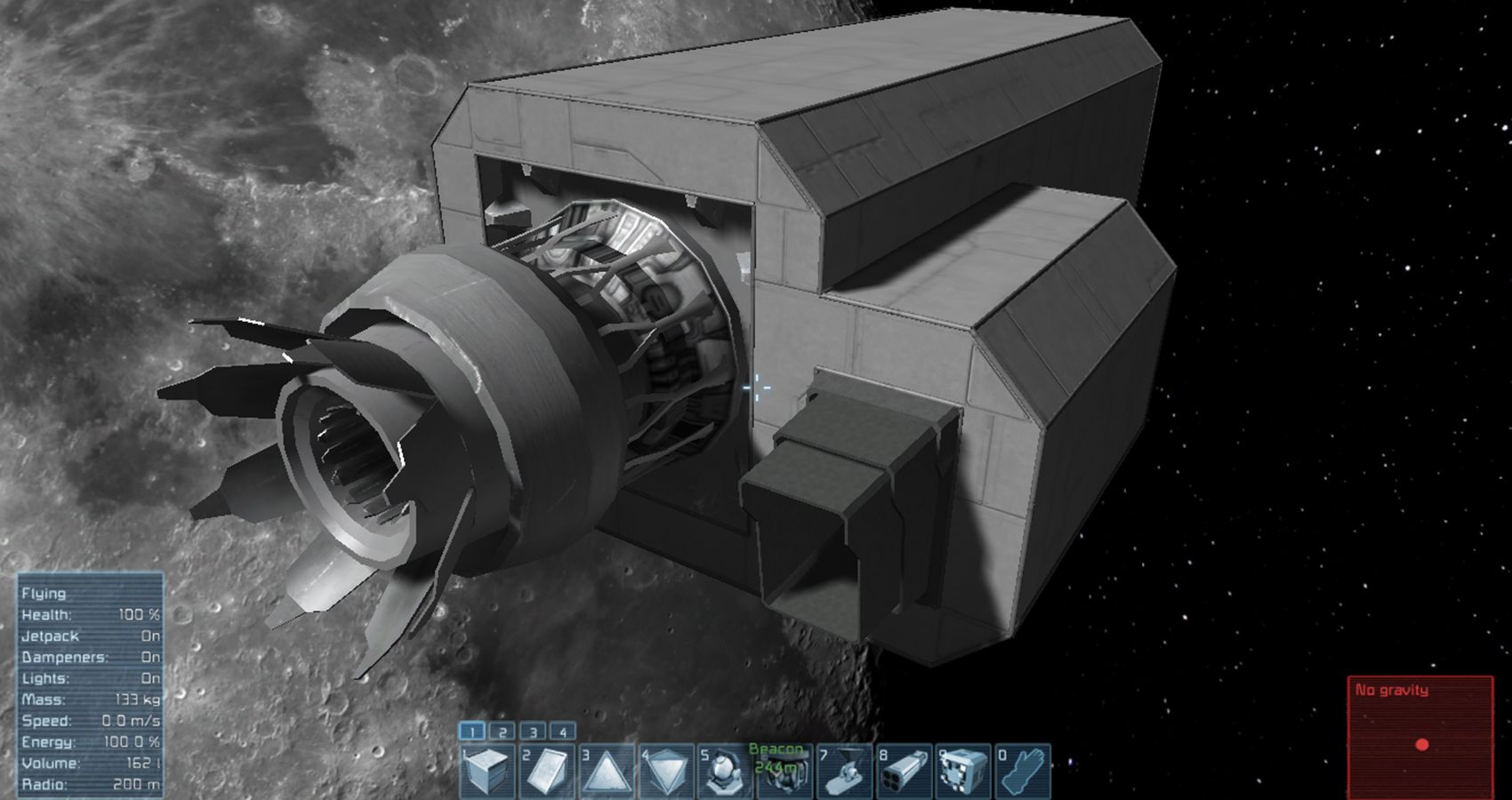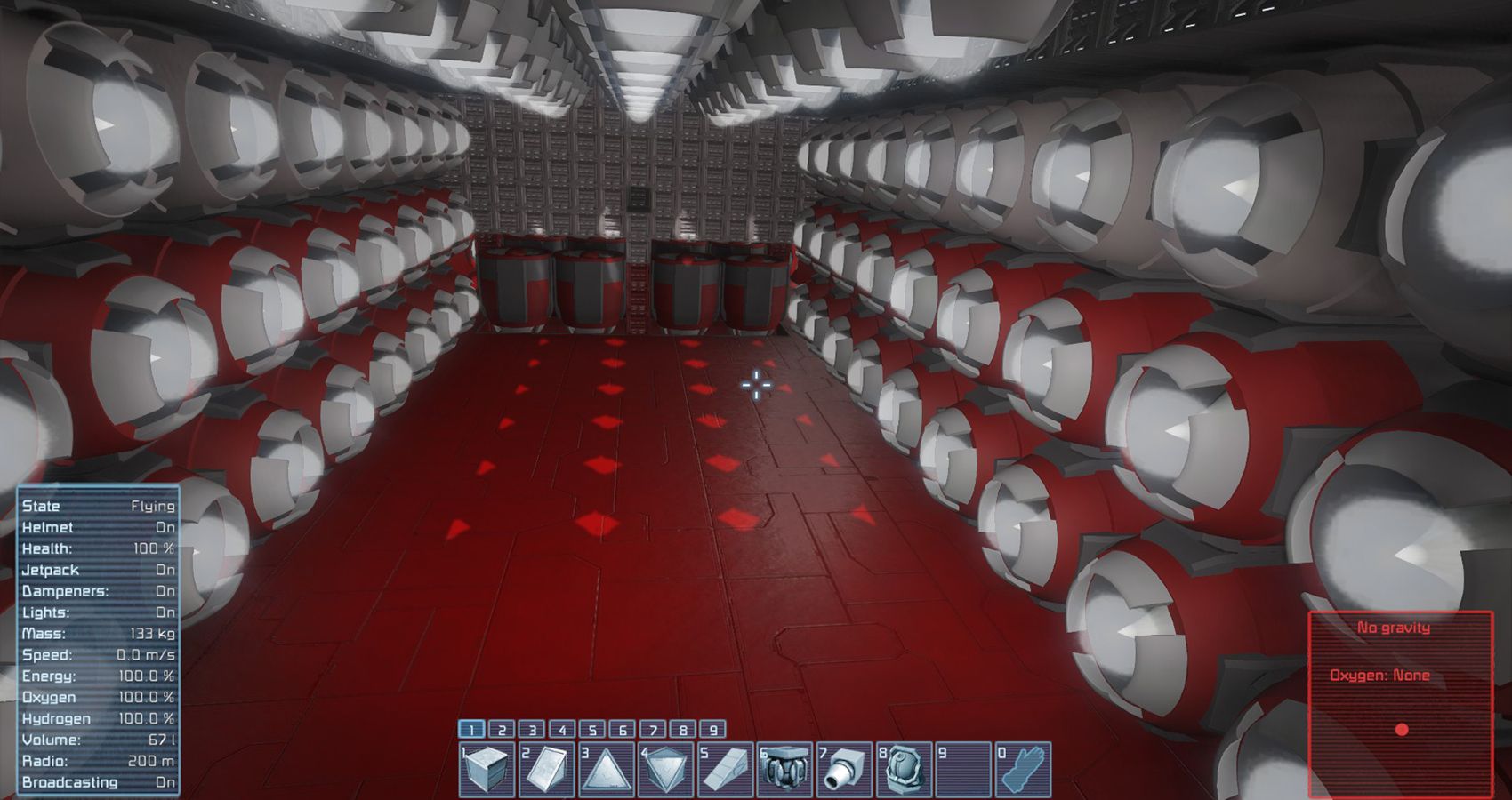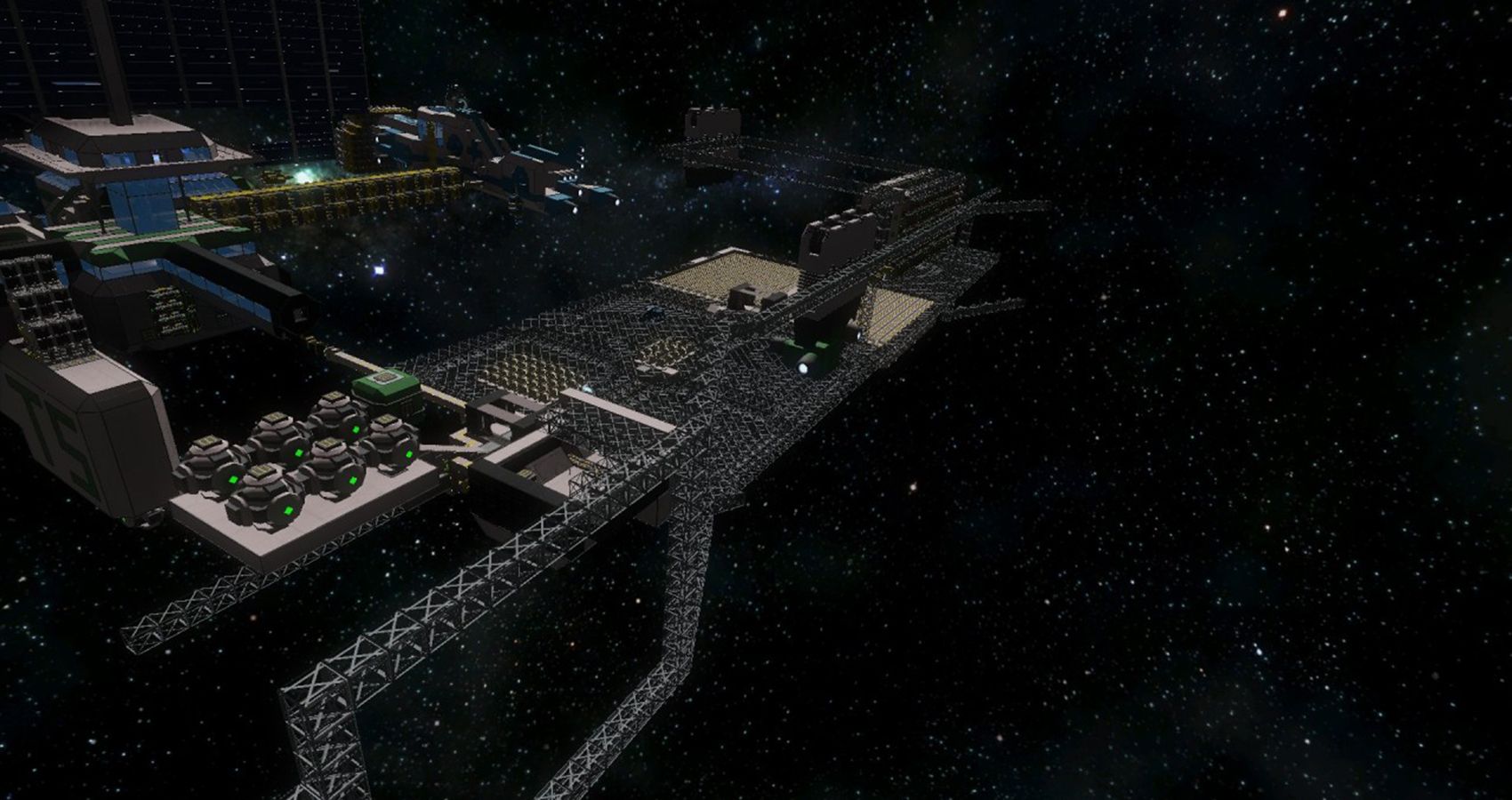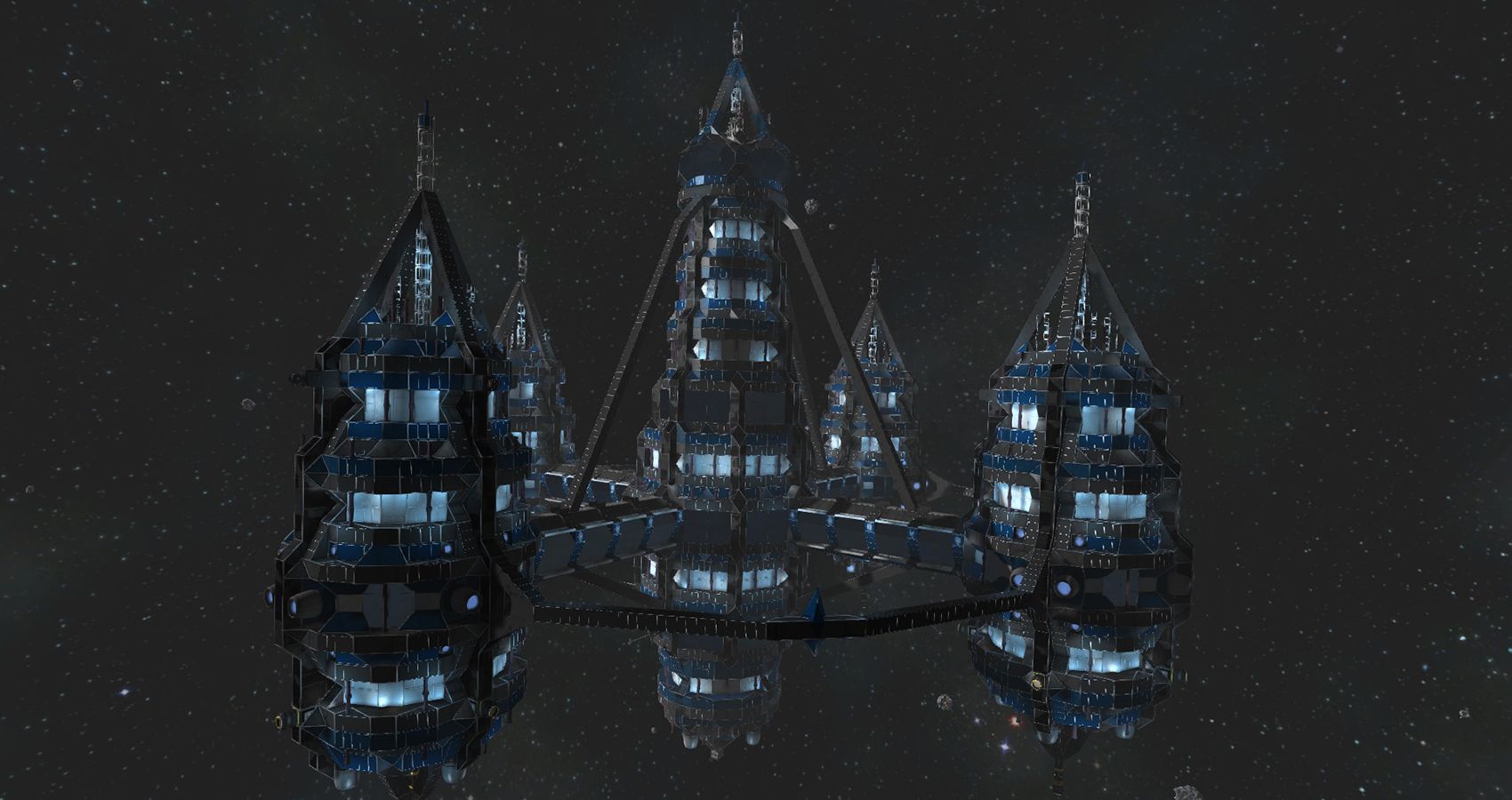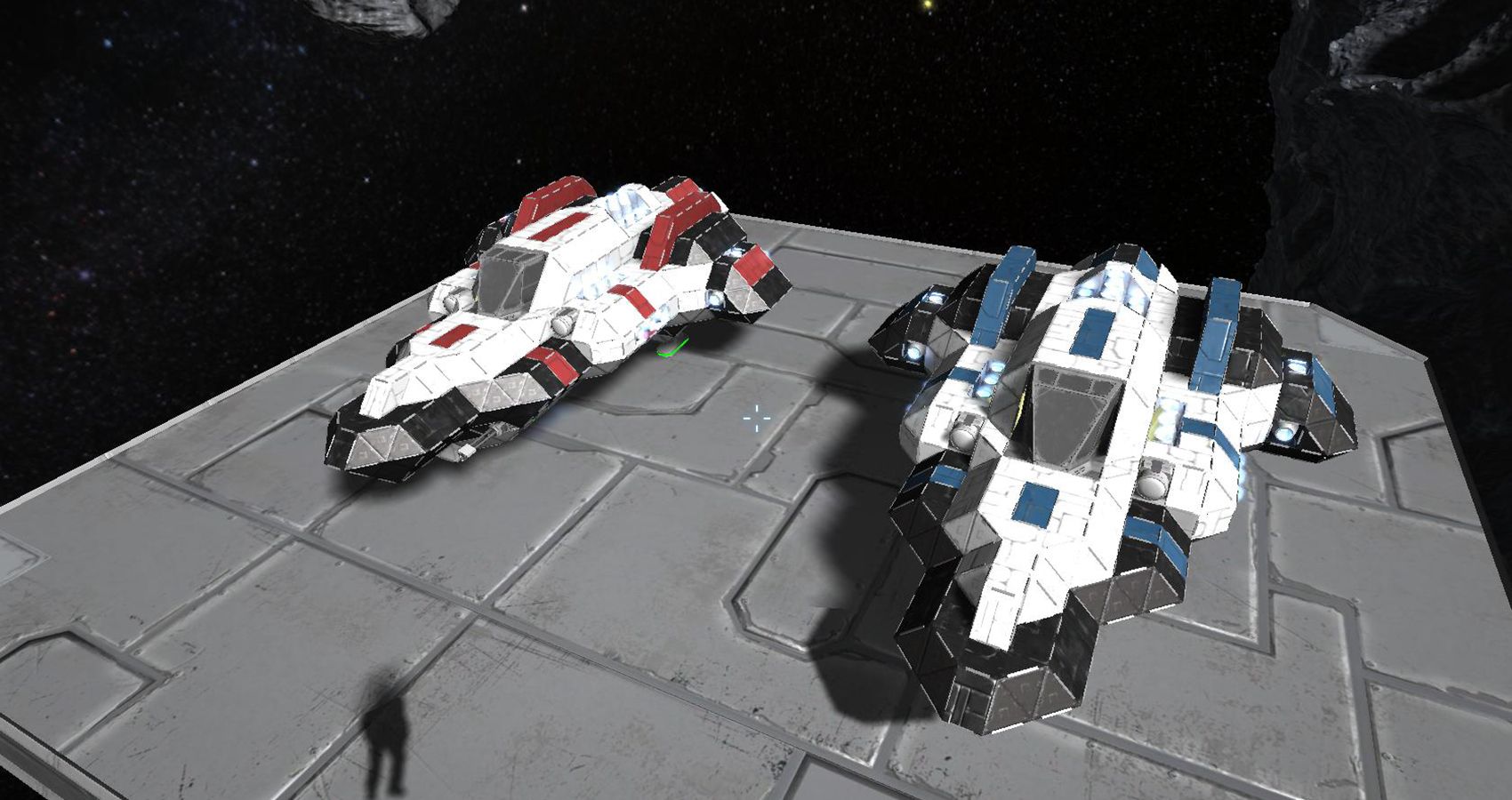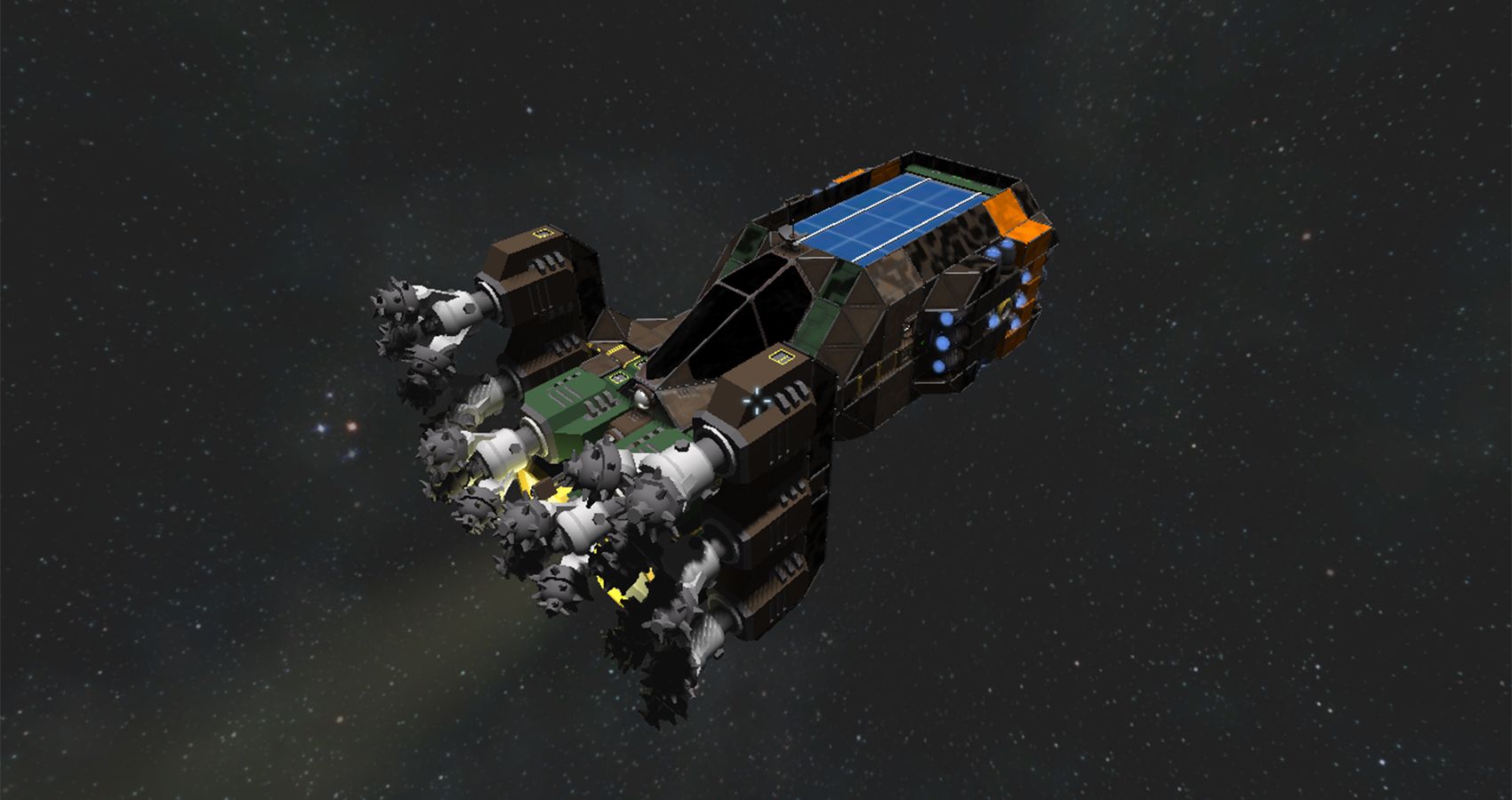Success in Space Engineers means crafting a variety of ships and stations for progressions and survival. A big component of that is working out the thrust and power requirements of any given build. There are a lot of factors that need to be considered for your ships to exit and enter an atmosphere, give large stations mobility, produce high speeds while still being able to turn and steer, and more.
While it’s impossible for a single article to account for all possible scenarios, builds, and ship configurations, there are some general rules and tips on how to use Space Engineers' thrusters effectively.
Updated August 30, 2021 by Ben Baker: Thrusters are one of the more pivotal components of ships in Space Engineers. Players will often use them incorrectly resulting in ships that are too large, too small, or needlessly drain power. After reviewing this article it became apparent that a common tactic used by players was not incorporated: building ships for specific activities. This article has now been updated to briefly examine the strategy of building ships around specific Thruster-types. By creating Ground Ships, Atmospheric Ships, and Space Ships you will be more efficient in gameplay and utilize your resources better. Hopefully, with this additional knowledge, you will get more out of this fantastic game.
13 Ground Ships
To keep things simple and efficient you should construct ships that operate in specific zones. Ground ships are meant to be utilized exclusively on the surface of a planet with gravity. The ships will utilize Atmospheric Thrusters and no others.
Space Engineers: Everything You Need To Know About Planets
Atmospheric Thrusters operate better on the surface of a planet. By building a ship specifically to use Atmospheric Thrusters it makes them more efficient and less wasteful. These ships also don’t need to worry about space travel or leaving the planet’s atmosphere. Examples of these kinds of ships are planet explorers, haulers, miners, and mobile bases.
12 Atmospheric Ships
It’s a bit misleading, but Atmospheric Ships do not use Atmospheric Thrusters. Instead, they should use only Hydrogen Thrusters. The ships are designed for entering and exiting a planet’s atmosphere. The Hydrogen Thrusters should be large enough to break free of the planet’s gravity well.
It’s a niche ship that won’t be used often. These are meant to ferry materials to and from the planet’s surface. Largely these will be bulky cargo ships or small exploratory craft. Only a few are needed in a standard playthrough.
11 Space Ships
Space Ships are vehicles that operate solely in space. Examples include things like asteroid miners, fighters, and long-range explorers. As a result, these ships will only use Ion-Based Thrusters. This allows you to make them more efficient and better suited for their roles in space.
Space Engineers: Every Tool And How To Use Them
Many players make the mistake of creating one-size-fits all ships, but this is a mistake. The best use of Thrusters is to make ships to take full advantage of each Thruster type. Space ships do not need Atmospheric Thrusters, Ground Ships do.
10 Types Of Thrusters
There are three types of thrusters in Space Engineers: Atmospheric, Ion-based, and Hydrogen. Atmospheric thrusters are for ships that will primarily be in atmospheres, such as small surveyors or scout ships. They lose a lot of efficiency in weak atmospheres or in space, so keep them planetside. They require electricity only when active.
Ion-based thrusters are for ships that are primarily in space, such as asteroid mining vessels. They lose a lot of efficiency in atmospheres, so keep them amongst the stars. They require electricity only when active.
Hydrogen thrusters are good for both atmospheres and space travel and are by far the strongest. Some players use them to get from a planet into space or when doing long-distance travel, while other players will only use hydrogen because they work anywhere. Unlike the other thruster types, they require hydrogen instead of electricity and consume hydrogen even when not being actively used, so keep that in mind before going crazy building hydrogen-only ships.
9 Pick Your Sides
It’s important when building a ship that you determine the sides of your ship. You need to decide where the front, rear, left, and right are (bow, stern, port, and starboard). The rear of your ship or station should always have the most thrusters, while the remaining sides should have less.
For example, if your large ship has one large reactor, then you could have nine thrusters in the rear, six on the front, six on the left, and six on the right. The rear should have your primary thrusters that push the ship forward, the sides give you steering, and the thrusters on the front are your brakes.
8 Fly Straight Up
When creating a ship designed to leave the atmosphere, it’s important to remember your ship will be fighting gravity. With this in mind, you need to have your thrusters angled to send your ship straight up, away from gravity.
It sounds simple, but if you design a ship that has the thrusters at a 45-degree angle from the center of gravity (center of the planet), the efficiency of your thrusters drops to about 70.7%. You lose almost 30% of your thrust simply because they’re tilted. Save yourself the hydrogen or the electrical requirements by keeping your thrusters at a 90-degree angle away from the planet (standing straight up).
7 Use Large Thrusters
From an efficiency standpoint, large thrusters make the most sense. One large thruster has the same volume and electrical requirements as 12 small thrusters, but one large thruster will only take up the same amount of space as six small thrusters, and they’re slightly more efficient than twelve small thrusters. Basically, you get more kick and take up less space for the same weight and power usage when going large, so use large thrusters.
The only exception to this is if you’re building something really small. Large thrusters can be bulky and are definitely overkill if you only need the push of two small thrusters. Plus, the power requirements might require more reactors and batteries than you have space for. If it’s small, use small thrusters, but for everything else use large thrusters.
6 Internal Thrusters
A clever trick some builders use to give their ships more power without making the rear any larger is to place internal thrusters within the ship. A small thruster will damage up to six blocks behind it and a large thruster will damage up to eight blocks behind.
So you can use thrusters inside your ship by ensuring they have the empty space behind them and some heavily armored block on the seventh or ninth block to prevent your ship from getting damaged. Now you have more thrust without resorting to a bigger profile.
5 Use Creative To Test Builds
Even with a guide, there will be a lot of trial and error as you create your builds and figure out the appropriate amount of thrusters and configurations. Save yourself the time and resources by doing all of this testing in creative. You’ll have an infinite supply of resources that you didn’t have to mine for and save yourself a lot of headaches.
Once you’ve nailed down the exact specifications, create a blueprint of the build and export it to your save files. Then, when you go back into survival and pull your blueprint, you’ll know exactly what you need to do to build your ship.
4 Creative Is Not Survival
When doing your research and testing in Creative mode, it’s important to remember that just because something is possible in creative, doesn’t mean it’s practical in survival. Sure, that giant space station with hundreds of large hydrogen thrusters looks cool and would be very helpful as a base of operations. But if it takes months to gather the supplies to build the darn thing, then it’s not very helpful.
It’s better to have smaller to medium-sized builds in survival to give yourself a working base of operations. Then, when you have that infrastructure set up, go crazy on the massive builds.
3 Small Ships
If you’re building a light, fast ship like a scout ship, fighter, or ground transport, then generally speaking you’ll probably want a large thruster on the rear with a couple of small thrusters on the sides and front. That large thruster will give your small craft a lot of speed, which is primarily what small craft are for, while the others will be for turning and braking. Don’t neglect those forward thrusters on your fast ship.
If your ship will only ever be in space, use Ion-based thrusters, and if it’s a planetary craft, use Atmospheric. Hydrogen engines are probably overkill, so stick to electrical engines with batteries.
2 Precision Ships
Precision ships are things like mining vessels that need to be maneuvered on a dime and speed doesn’t really matter. They’re perhaps the one exception to the "always use large thrusters" tip because what you’ll want here is the ability to slowly turn and nudge your craft, which is easier to achieve with small thrusters all around the ship.
Precisions ships aren’t common planetside, but if you build one, use atmospheric thrusters. They’ll largely be space vessels that hover around asteroids, so use Ion-based thrusters. Again, hydrogen is a little overkill and you’ll be wasting resources, so stick to electrical thrusters with some batteries.
1 Large Builds
Large ships or stations will be bulky and cumbersome. These aren’t fast ships and they aren’t meant to turn on a dime like precisions builds. In fact, they'll primarily use jump drives anyway, and thrusters will be used to nudge it into the right location.
You’re looking at using large hydrogen thrusters. You could get away with the other types, but save yourself the headache and just use large hydrogen thrusters. Stations will have thruster placement all over the place like precision ships, while large vessels will be built like small ships, just with more and larger thrusters.

